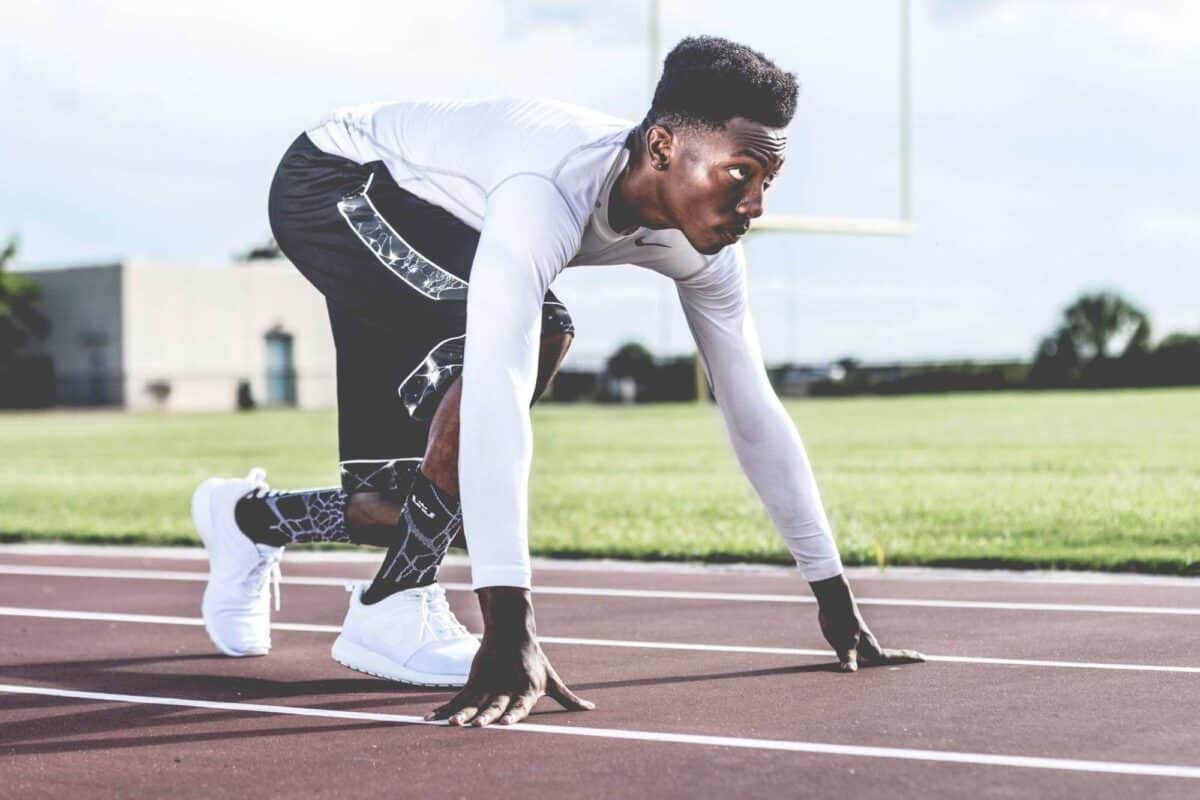Maximal oxygen uptake(VO2 max) can be defined as the maximum integrated capacity of the pulmonary, cardiovascular and muscular systems to uptake, transport and utilize oxygen respectively (Poole et al, 2008) and is the main indicator of an athlete’s aerobic capacity.
How is VO2 Max measured?
The only way to measure it directly is with a gas analyzer. Relatively few years ago the only way to measure it was in the laboratory, nowadays there are portable gas analyzers (such as PNOE) that allow us to obtain VO2 Max values through field tests.
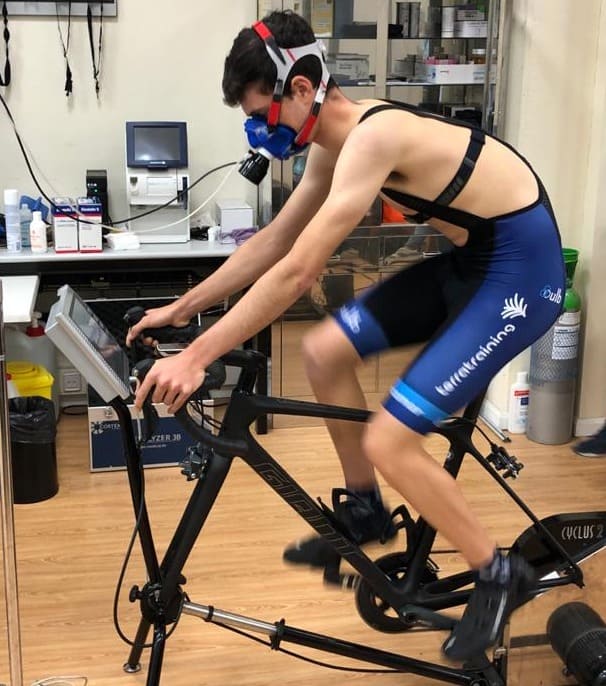
.
To estimate it indirectly there are several formulas and there are programs such as WKO or Garmin that give you an estimated value of your VO2 Max.
In the infographic we can see the formula proposed by the American College of Sports Medicine (ACSM) to estimate oxygen consumption in cyclists.
For runners we can also estimate it by performing a Copper test, consisting of seeing the maximum distance we are able to run in 12′, and applying the following formula:
VO2 max = 22.351 x Distance traveled (in km) -11.288
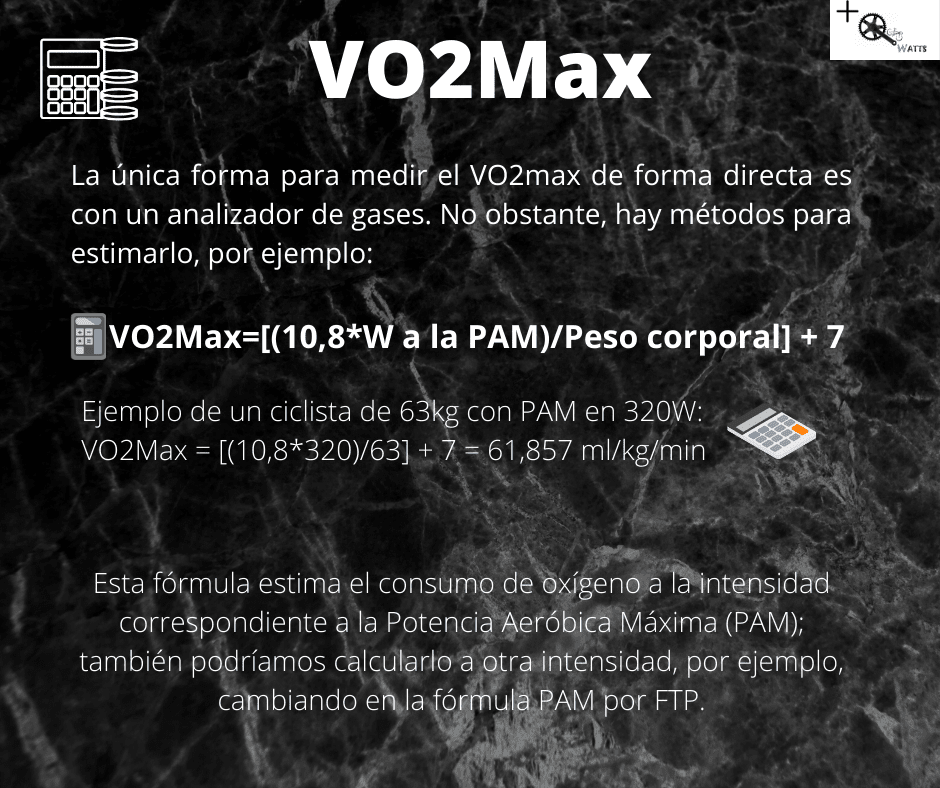
.
How to improve VO2 Max?
[article ids=”98340″] There are trainings focused on directly improving VO2 Max although this is largely determined by genetic factors, i.e., although it improves with training, it is a quality that is not very trainable compared to others.
However, we must differentiate between absolute and relative terms, since in order to relate it to sports performance, the weight variable is usually included.
Thus, although in absolute terms it is complicated to increase maximum oxygen consumption, the improvement can be more notable in relative terms, since if we reduce our body weight it is likely that our maximum oxygen consumption will increase.
Whyknow the VO2 Max?
If you are an athlete these values can be useful when prescribing training and to know your weaknesses and strengths as an athlete.
The maximum oxygen consumption is also a predictor of health, there being large differences between athletes and sedentary, we must also take into account other factors such as age and sex.
As a general rule, men have a higher VO2 Max than women, mainly due to a higher systolic volume, a higher hemoglobin concentration, a greater amount of muscle mass and a lower amount of body fat.
The following tables compare VO2 Max data by age and sex.
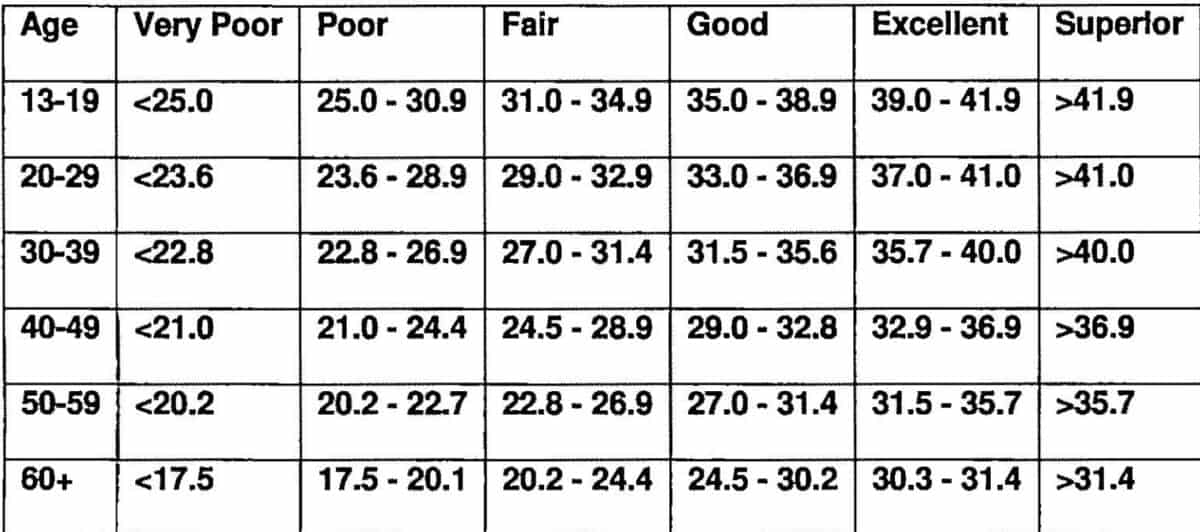
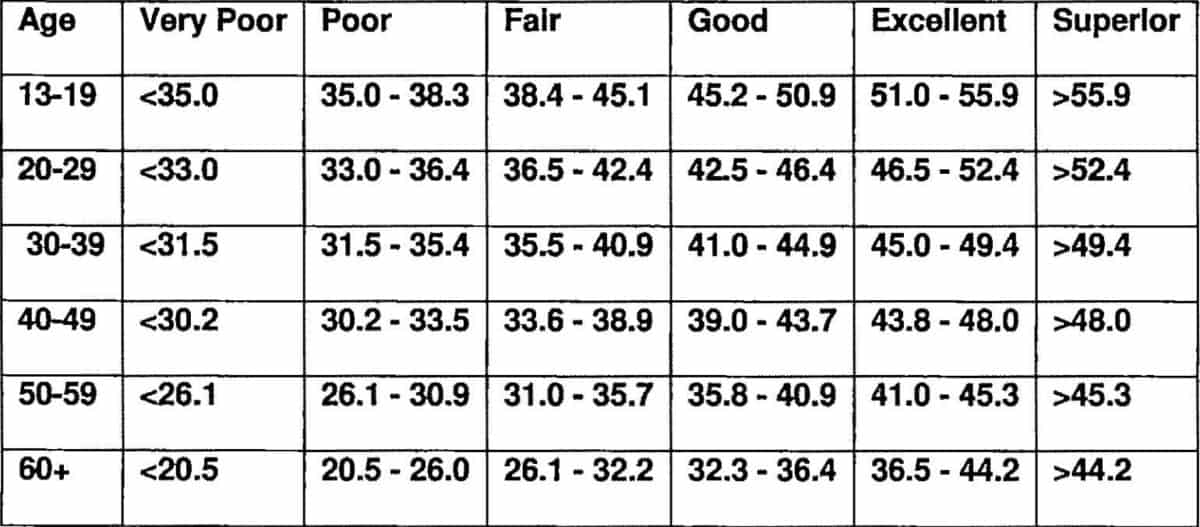
High level athletes have much higher VO2Max values than sedentary people, the best endurance athletes in the world usually coincide in having amaximal oxygen consumption well above average, examples are Kilian Jornett (90 ml/kg/min), Miguel Induráin (88 ml/kg/min) or Chris Froome (84.6 ml/kg/min).
Below you can see a table proposed by Jeukendrup (2000) and modified by Hopker and Jobson (2012) comparing peak oxygen consumption data between competitive level cyclists.

.
VO2 Max and age
It is a reality that VO2 Max is diminished with age but physical exercise plays a fundamental role and can attenuate this process enormously.
It is considered that maximal oxygen consumption begins to decline from the age of 25 years, decreasing by about 10% per decade and even 15% in those over 50 years, this decline may be due to the decline in the ability of muscle to extract oxygen. This decrease in VO2 Max is directly related to the decrease in sports performance.
However, there are several studies that conclude that the decrease in VO2 Max due to age could be attenuated by 50% if physical exercise is continued, therefore, much will depend on the continuity and intensity of training, especially after the age of 60.
Conclusions
In any case, although this variable is important if you practice an endurance sport, it is not everything.
Sport is usually very unpredictable and this value alone will not give us real information about the athlete’s performance, we should look at other factors such as the percentage of VO2 Max are the thresholds, efficiency, the ability to recover after the efforts, the mental strength of the athlete, the technical and tactical aspects of each sport discipline and so on.
In short, if you have a high oxygen consumption you will have great qualities for endurance sports (a good engine as they say in the cycling jargon) but you have to keep working and polishing other aspects, since this value alone will not make you win your competitions.
As a curious fact, the best VO2Max data recorded is held by the Norwegian Oskar Svendsen with 97.5 ml/kg/min, world junior time trial champion cyclist in 2012. In 2014 he decided to quit professional cycling and start his university studies in psychology saying in an interview: ”Talent is in the head, it’s what you create yourself”.Conclusion
- It is the main indicator of an athlete’s aerobic capacity.
- The only way to directly measure VO2 Max is by means of a gas analyzer, however, there are methods to estimate it.
- It is not very trainable in absolute terms but more modifiable in relative terms.
- The differences in VO2 Max values between athletes and sedentary people are very large.
- VO2 Max will decrease with age but physical exercise can attenuate this.
- It is a good indicator to evaluate the ”motor” of an athlete but in competition performance is influenced by many more variables.
Bibliography consulted
- Jeukendrup, A. E., Craig, N. P., & Hawley, J. A. (2000). The bioenergetics of world class cycling. Journal of science and medicine in sport, 3(4), 414-433.
- Rogers, M. A., Hagberg, J. M., Martin 3rd, W. H., Ehsani, A. A., & Holloszy, J. O. (1990). Decline in VO2 max with aging in master athletes and sedentary men. Journal of applied physiology, 68(5), 2195-2199.
- Heath, G. W., Hagberg, J. M., Ehsani, A. A., & Holloszy, J. O. (1981). A physiological comparison of young and older endurance athletes. Journal of Applied Physiology, 51(3), 634-640.
- Hopker, J., & Jobson, S. (2012). Performance cycling: the science of success. A&C Black.
- Zabala, M. (2020). Cycling Specialization Subject, University of Granada.
- Heyward, V. H. (1998). The physical fitness specialist certification manual. Dallas, TX: The Cooper Institute for Aerobics Research, 48.
- Koutlianos, N., Dimitros, E., Metaxas, T., Cansiz, M., Deligiannis, A. S., & Kouidi, E. (2013). Indirect estimation of VO2 max in athletes by ACSM’s equation: valid or not?. Hippokratia, 17(2), 136.
